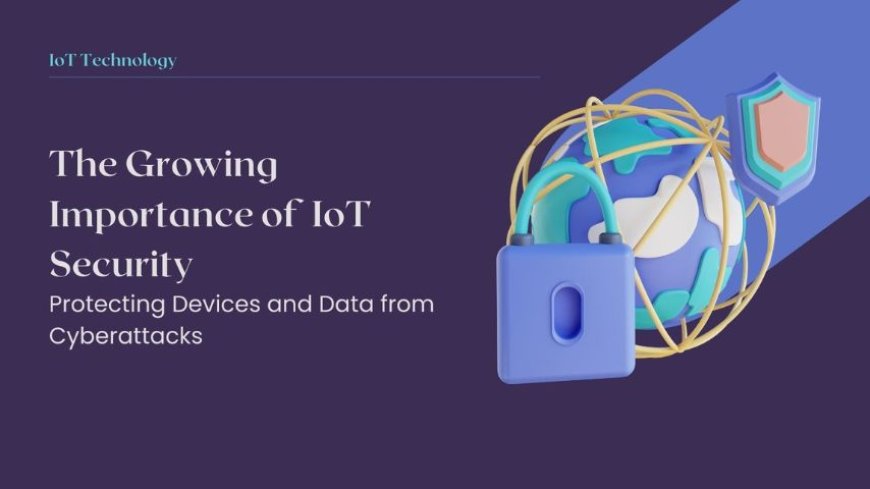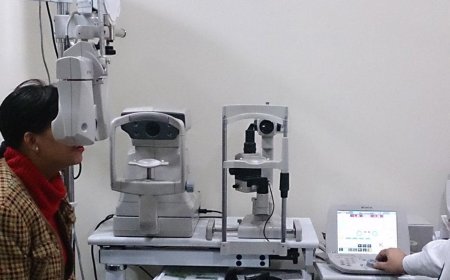The Growing Importance of IoT Security: Protecting Devices and Data from Cyberattacks
The Internet of Things (IoT) has revolutionized our lives, connecting everything from home appliances to industrial machinery. However, with this increased connectivity comes a greater risk of cyberattacks. Protecting IoT devices and data from cyber threats has become more critical than ever.

The Internet of Things (IoT) is rapidly transforming our world. From smart homes and wearables to connected cars and industrial machinery, billions of devices are now collecting and transmitting data. This interconnected ecosystem offers numerous advantages, but it also creates a vast new attack surface for cybercriminals.
This article explores the growing importance of IoT security and the potential consequences of neglecting it. We’ll discuss the unique challenges of securing IoT devices and data, and provide valuable insights for businesses and individuals looking to protect their connected world.
Why is IoT Security So Important?
Several factors contribute to the critical nature of IoT security:
- The pervasiveness of Devices: The sheer number of connected devices creates a vast attack surface. Hackers can exploit vulnerabilities in even a single device to gain access to a network and launch widespread attacks.
- Data Sensitivity: IoT devices often collect sensitive data, including personal information, home security details, and industrial secrets. Breaches can have severe financial and privacy repercussions.
- Limited Security Features: Many IoT devices prioritize low cost and power consumption over robust security features. This makes them vulnerable to common hacking techniques.
- Lack of User Awareness: Many users are unaware of the security risks associated with IoT devices. They may fail to implement basic security measures like changing default passwords or updating firmware.
Stats that Showcase the Threat Landscape:
- A 2023 report by Gartner predicts that by 2 2025, over 70% of security breaches will involve IoT devices.
- A study by Cybersecurity Insiders reveals that 82% of organizations have experienced at least one IoT-related security incident.
These statistics highlight the increasing prevalence of IoT security threats and the urgent need for robust security measures.
Common Challenges in Securing the IoT Landscape
Securing the IoT landscape presents unique challenges compared to traditional IT security:
- Heterogeneity of Devices: The vast array of IoT devices with different operating systems, hardware capabilities, and security features makes it difficult to implement a one-size-fits-all security solution.
- Limited Processing Power and Memory: Many IoT devices have limited processing power and memory constraints. This can restrict the implementation of complex security software.
- Physical Security Concerns: Unlike traditional IT equipment, many IoT devices are physically accessible, making them vulnerable to tampering or theft.
- Patch Management Difficulties: Patching vulnerabilities in a large number of geographically dispersed devices can be a complex and time-consuming task.
Strategies for Strengthening IoT Security
Here are some key strategies to strengthen IoT security:
- Prioritize Security During Development: IoT Application Development Solutions companies should prioritize security throughout the development lifecycle. This includes secure coding practices, penetration testing, and vulnerability assessments.
- Implement Strong Authentication and Authorization: Use multi-factor authentication and implement granular access controls to restrict unauthorized access to devices and data.
- Encrypt Sensitive Data: Encrypt data at rest and in transit to protect it from interception by hackers.
- Keep Software Updated: Regularly update device firmware and software to patch known vulnerabilities. Encourage users to enable automatic updates whenever possible.
- Segment Networks: Segment the network to isolate IoT devices from critical infrastructure and limit the potential damage of a security breach.
- Monitor for Security Threats: Continuously monitor IoT devices for suspicious activity and deploy security solutions that detect and prevent cyberattacks.
- Educate Users: Educate users about the importance of IoT security and best practices for securing their devices. This includes using strong passwords, avoiding public Wi-Fi networks, and being cautious about downloading apps from unknown sources.
The Role of IoT Consulting Companies
IoT consulting companies play a crucial role in helping businesses navigate the complex world of IoT security. These companies offer:
- Security Assessments: They can assess an organization’s existing IoT infrastructure and identify potential security weaknesses.
- Security Architecture Design: They can design a comprehensive security architecture that addresses the specific needs of the organization’s IoT deployments.
- Security Implementation: They can assist with the implementation of security solutions, including device hardening, network segmentation, and security monitoring tools.
- Ongoing Support: They can provide ongoing support to ensure the organization’s IoT security posture remains effective.
The Future of IoT Security
The future of IoT security is likely to see advancements in several key areas:
- Standardization: Industry-wide security standards are crucial for improving the overall security posture of the IoT ecosystem.
- Artificial Intelligence (AI): AI-powered security solutions can help organizations detect and respond to security threats more efficiently.
- Blockchain Technology: Blockchain can be used to secure data provenance and ensure the integrity of data collected by IoT devices.
By adopting these strategies and staying informed about the evolving security landscape, businesses, and individuals can take proactive steps to protect their connected devices and data. Here are some additional points to consider:
- Shared Responsibility: The responsibility for IoT security lies with all stakeholders involved. Manufacturers, developers, businesses, and users all have a role to play in ensuring the security of the IoT ecosystem.
- Regulatory Landscape: Regulatory frameworks around IoT security are likely to become more stringent in the coming years. Businesses need to stay updated on regulations and ensure their IoT deployments comply with relevant standards.
- Privacy Concerns: As the amount of data collected by IoT devices grows, privacy concerns will continue to be a major focus. Businesses need to implement strong data privacy practices and be transparent about how user data is collected, used, and stored.
Conclusion: Securing the Future of IoT
The benefits of IoT are undeniable, but these benefits can only be fully realized if robust security measures are in place. By prioritizing security throughout the development lifecycle, implementing strong security controls, and educating users, we can create a more secure and trustworthy IoT ecosystem. Collaboration between manufacturers, developers, businesses, and individuals is essential to building a future where the potential of IoT can be harnessed safely and responsibly.
Considering partnering with an IoT consulting company? Look for a company with expertise in IoT security assessments, architecture design, and implementation. Their guidance can help you develop a comprehensive security strategy for your IoT deployments.
By embracing a proactive approach to IoT security, businesses and individuals can ensure their connected devices and data remain protected, paving the way for a more secure and prosperous future for the Internet of Things.
What's Your Reaction?
















![Noots Focus Reviews [Truth Exposed 2025]!](https://news.bangboxonline.com/uploads/images/202501/image_430x256_678e3b94881a1.jpg)
![Vivalis Male Enhancement: The Must-Know Ingredients [2025 Update]](https://news.bangboxonline.com/uploads/images/202501/image_430x256_678e3b54e396c.jpg)










